These pages are in memory of my GrandfatherRifleman 425910, Sydney William Loxtonwho joined the 10th Battalion, The London Regiment in December 1917 and on arrival in France in 1918 was posted to the8th Battalion, The London Regiment, "The Post Office Rifles" |
||
© Open a High-Resolution, Half-Screen Version in a New Window |
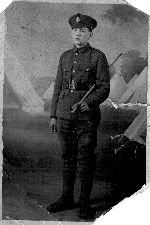 |
§ Open a High-Resolution, Full-Size Version in a New Window |
|
||
© Open a Medium-Resolution, Half-Screen Version in a New Window |
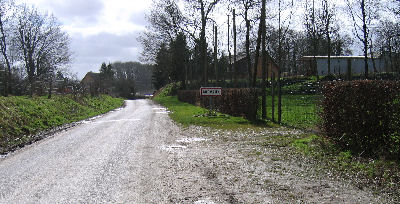 |
§ Open a Medium-Resolution, Full-Size Version in a New Window |
July was spent relatively quietly, apart from one major incident in the trenches at Mirvaux. This involved a daylight trench raid carried out by the Battalion on 25 July. No less than three hundred PORs went over the top, and initially it progressed well with the German trenches being entered, prisoners taken and casualties inflicted. Unfortunately the smokescreen which was to cover the withdrawal did not materialise. The raiders were taken in the flanks by heavy machine gun fire, which resulted in two officers killed, four wounded and 113 other rank casualties. Many of the wounded had to be left behind in No Man's Land. So, by getting back to his own line, being treated, shipped back to England for further treatment, and ultimately surviving, Grandad was certainly one of the lucky ones! His Early Life |
||
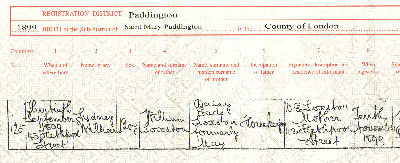 |
§ Open a Medium-Resolution, Full-Size Version in a New Window |
|
|
||
§ Open a Medium-Resolution, Full-Size Version in a New Window |
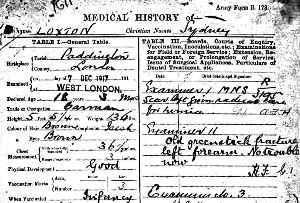 |
|
|
||
|
||
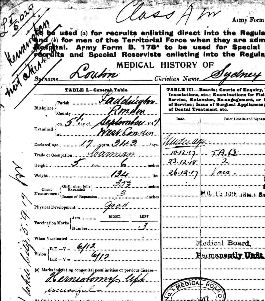 |
§ Open a Medium-Resolution, Full-Size Version in a New Window |
|
|
||
§ Open a Medium-Resolution, Full-Size Version in a New Window |
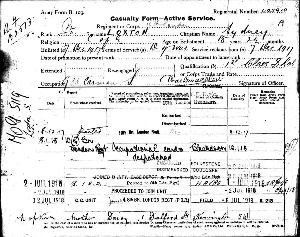 |
|
|
||
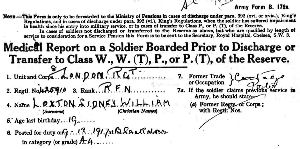 |
§ Open a Medium-Resolution, Full-Size Version in a New Window |
|
By the end of the spring offensive things had changed, and it was necessary to send 18-year old "A4 Boys" to fight in France and Flanders. Such was the shortness of both their training and equipment that some A4 Boys had never fired a live round from their rifle until they reached the front line. And tragically, some never got the chance even then. |
||
|
||
© Open a High-Resolution, Half-Screen Version in a New Window |
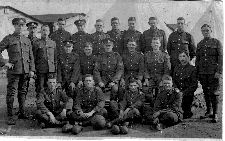 |
§ Open a High-Resolution, Full-Size Version in a New Window |
As Charles Messenger states, things appear to have been pretty quiet until the daylight raid on the 25th July. |
||
Being wounded badly enough not to be sent back into action, but not terribly seriously, yet enough to need prolonged treatment at a Military Hospital in England, the men who "got a Blighty one" felt grateful. There is no record of Sydney being treated at either a Regimental Aid Post or an Advanced Dressing Station but his medical papers state that he was injured "In action, on field service, on duty at Albert on 25th July 1918, receiving a gunshot wound to his right arm which caused a compound fracture of the right humerus. Number 4 Casualty Clearing Station, run by the 1/2 Home Counties Field Ambulance (a body of men, not a vehicle!) at Pernois, between Amiens and Abbéville, confirmed the compound fracture of the humerus on 25th July. |
||
© Open a Medium-Resolution, Half-Screen Version in a New Window |
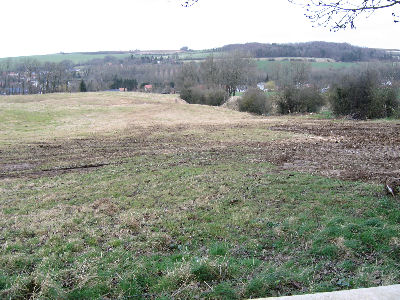 |
§ Open a Medium-Resolution, Full-Size Version in a New Window |
|
||
© Open a Medium-Resolution, Half-Screen Version in a New Window |
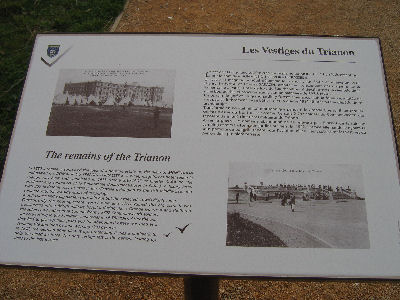 |
§ Open a Medium-Resolution, Full-Size Version in a New Window |
Even without half-brother Harry barely 18 months old and the other three aged between 6 and 13, it is doubtful whether his mother would have been able to visit him in hospital in Newcastle, a situation compounded by the fact that she was expecting another half-brother, Ted, who was born in January 1919. She did eventually marry Harry and Ted's father, William Bottom, in July 1919, herself surviving to the age of 95 when she died in 1974. According to Sydney's medical records, nothing much of note happened to him until April 1919 apart from a second T.A.B. (Typhoid/Paratyphoid A and B) vaccination (his first having been shortly after enlistment) and another unnamed vaccination, either side of Christmas. He was however, able to send home a photograph of some of the patients and nurses, as well as the Christmas decorations. Once again, roll your mouse over the picture to identify Sydney. |
||
© Open a High-Resolution, Half-Screen Version in a New Window |
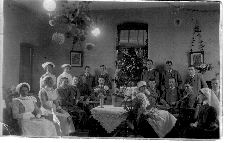 |
§ Open a High-Resolution, Full-Size Version in a New Window |
There is an entry on his medical record quoting 22nd April and the 4th London General Hospital, but I suspect this may be a clerical error. One cannot assume that Sydney eventually made it back to London at this point, although it is possible that he did. On 2nd June he was admitted to what appears from the hand written records to be Fairburn Auxiliary Hospital. If this is correct, the only Fairburn I can find is in North Yorkshire, near Castleford. After 52 days at Fairburn he was transferred on 24th July to the 4th London General Hospital at Denmark Hill. Despite being south of the river, at least he was back in London - almost exactly a year after being shot!
This stated his arm power to be weak but the function of the joint (presumably his shoulder) to be perfect, and assessed him to be 30% disabled in his right arm. This condition was declared to not be in a final and stable state and the current situation was felt likely to last for 3 months. However, the doctors were not confident enough (and therefore to be commended) to give a 12 month prognosis for the purposes of awarding a reduced pension at a later date. On 19th August he left the 4th London General Hospital after 25 days, discharged form the Army under Section 392 (xvi) of Kings Regulations - No longer physically fit for war service.
On 18th February 1920 an application was made for an interim pension award, pending receipt of a Medical Report. It is noted in the application that the pension expires on 1st June 1920. This interim award was made on 19th extending the 12/- award to 3rd March. The next day, 20th March, the Medical Report was submitted stating that his disability was now less than 20%. On 12th April, on consideration of the Medical Report, his pension was agreed to be extended from 2nd June at 5/6d (27.5p), to expire on 31st May 1921. There is documentary evidence showing that this did indeed occur on 2nd June. On 31st January 1921, giving his occupation as "Carman GWR", Sydney married Florence Eliza Cocks at Kensington Register Office, and their first son, also Sidney William but this time with an "i", was born on 4th June that year. And Sydney's pension did cease as predicted by the authorities on 31st May, four days before the birth. They had three more children: Edward Joseph (Joe) on 2nd November 1922, Daisy Elizabeth on 2nd August 1928 and Stanley on 18th February 1932. Sydney never let his 'war wound' stop him lifting a pint or throwing a dart, and he eventually died in St Mary's Hospital, Harrow Road, Paddington on 2nd July 1969. |
||
|
||